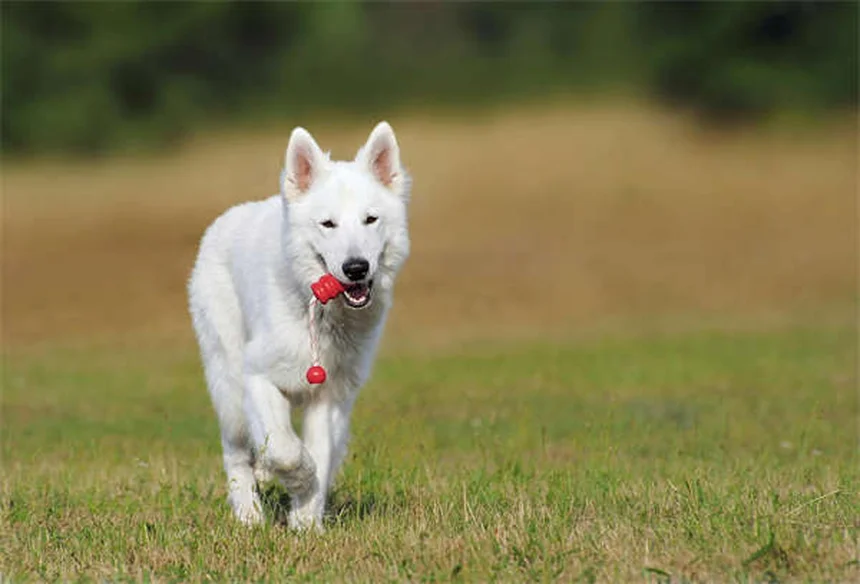How to pick up a rabbit without scaring them? The answer is simple: you need to support their body properly and move with confidence. As prey animals, rabbits can get terrified if handled incorrectly, which is why so many bunny owners struggle with this basic task. I've been raising rabbits for over a decade, and let me tell you - there's a right way and a wrong way to do this.The key is understanding that rabbits need to feel completely supported when lifted. You wouldn't want to be picked up by just your waist with your legs dangling, right? Well, your bunny feels the same way! That's why we always use two hands - one under the chest and one supporting the hindquarters.In this guide, I'll walk you through the exact steps I use with my own rabbits. We'll cover everything from reading your bunny's body language to special handling tips for kids. Stick with me, and you'll be picking up your rabbit like a pro in no time!
E.g. :Dog Poop Schedule: What's Normal & When to Worry
- 1、The Right Way to Pick Up Your Bunny
- 2、Mastering the Bunny Lift
- 3、Teaching Kids to Handle Rabbits
- 4、Reading Bunny Body Language
- 5、Special Considerations
- 6、Frequently Asked Questions
- 7、Bunny Bonding Beyond the Basics
- 8、Understanding Rabbit Personalities
- 9、Advanced Handling Techniques
- 10、Emergency Handling Scenarios
- 11、Seasonal Handling Considerations
- 12、FAQs
The Right Way to Pick Up Your Bunny
Let me tell you, picking up a rabbit isn't like grabbing your morning coffee - you've got to do it with care and confidence. Rabbits are prey animals, which means they're naturally skittish. One wrong move and you'll have a terrified bunny on your hands (or more likely, not in your hands).
Setting the Stage for Success
First things first - create a safe space. I always recommend:
- A carpeted or rug-covered floor (bunnies can slip on hardwood!)
- An area free of obstacles (no lamps or vases nearby)
- Some tasty treats to lure your furry friend
Did you know rabbits have a blind spot right in front of their nose? That's why approaching from the side works better than coming straight at them. Try it next time - you'll see the difference!
The Art of Bunny Petting
Before you even think about lifting, get your rabbit comfortable with touch. Start with areas they're used to:
| Safe Zones | Approach With Caution |
|---|---|
| Back and shoulders | Belly area |
| Head and ears | Hind legs |
Here's a pro tip: always let the rabbit sniff your hand first. I like to make a fist (less tempting to nibble than fingers) and let them investigate. When they seem relaxed, gently stroke their back.
Mastering the Bunny Lift
 Photos provided by pixabay
Photos provided by pixabay
The Perfect Pick-Up Technique
Now for the main event! The golden rule? Always support both ends. Here's how I do it:
- Scoop one hand under the chest (like you're cradling a football)
- Place your other hand under the hindquarters
- Lift smoothly and bring them against your body
Why is this so important? Well, imagine if someone picked you up by just your waist - your legs would dangle uncomfortably, right? Same goes for bunnies. They need to feel fully supported.
Common Mistakes to Avoid
I've seen people make these errors way too often:
- Grabbing by the ears (ouch!)
- Lifting by the scruff (that's for kittens, not rabbits)
- Holding them away from your body (makes them feel insecure)
Remember that time I tried to pick up my friend's rabbit too quickly? Let's just say I learned the hard way that slow and steady wins the race when it comes to bunny handling!
Teaching Kids to Handle Rabbits
Age-Appropriate Bunny Interactions
Here's a question: Should little kids hold rabbits? The answer might surprise you.
Children under 7 should stick to petting rabbits while supervised. Why? Because young kids often don't have the fine motor control needed to properly support a rabbit. Instead, teach them to:
- Pet gently with an open hand
- Let the rabbit come to them
- Recognize when the bunny wants space
 Photos provided by pixabay
Photos provided by pixabay
The Perfect Pick-Up Technique
For older kids ready to learn, try this foolproof method:
- Sit on the floor with the child in your lap
- Let the rabbit approach naturally
- Guide the child's hands as they practice lifting
I'll never forget the first time my niece successfully picked up our rabbit - the look of pride on her face was priceless! Just make sure the rabbit is already comfortable with being handled before attempting this.
Reading Bunny Body Language
Signs Your Rabbit is Stressed
Ever wonder what your rabbit is trying to tell you? Their body speaks volumes:
- Ears pinned back = "I'm nervous"
- Loud tooth grinding = "I'm scared"
- Thumping hind legs = "Danger!" or "Pay attention to me!"
Here's something interesting - did you know rabbits can scream? It's rare but terrifying when it happens. If you ever hear this, stop what you're doing immediately and check for injury.
When to Back Off
Watch for these clear "back off" signals:
- Growling or grunting
- Lunging or nipping
- Tense body posture
Remember my neighbor's rabbit, Thumper? He'd always give one warning thump before hopping away. It was his way of saying, "That's enough petting for now." Smart bunny!
Special Considerations
 Photos provided by pixabay
Photos provided by pixabay
The Perfect Pick-Up Technique
Older bunnies or those with health issues need extra care. Conditions like arthritis can make being held painful. If your rabbit:
- Winces when touched
- Seems extra sensitive
- Has trouble moving
...they might need a vet visit before handling attempts.
Respiratory Concerns
Rabbits with sniffles or breathing issues? Be extra gentle. Pressure on their chest can make it harder to breathe. I learned this the hard way with my asthmatic bunny, Snowball - she'd wheeze if held too tightly.
Frequently Asked Questions
What's the Safest Way to Hold a Rabbit?
The football hold! One hand supporting the chest, the other under the hindquarters, held snug against your body. This gives them security while preventing kicking or jumping.
My Rabbit Hates Being Picked Up - Help!
Start small. First get them comfortable with touch, then try lifting just an inch off the ground for short periods. Reward with treats! My stubborn bunny, Oreo, took three months of daily practice before tolerating being held.
Can I Scruff My Rabbit?
Nope! Unlike cats, rabbits don't have loose neck skin meant for carrying. Scruffing can cause serious injury and should never be done.
Will My Rabbit Bite Me?
Here's a question: Do rabbits bite? The answer is yes - but usually only when terrified. Proper handling and reading their signals prevents most bites. Though I'll admit, even after years of experience, I've gotten a few warning nips!
Featured Image: Vanessa Nunes/iStock via Getty Images Plus
Bunny Bonding Beyond the Basics
Creating a Trust-Based Relationship
You know what's more important than perfect lifting technique? Building real trust with your rabbit. I've found that bunnies who genuinely like their humans are way more cooperative during handling. Here's what works wonders:
Spend at least 30 minutes daily just sitting on the floor with your rabbit - no picking up, just being present. Bring a book or your phone, and let them approach you. Over time, they'll start climbing into your lap voluntarily. My rabbit Buttercup now demands lap time every evening at 7pm sharp!
The Power of Positive Reinforcement
Ever tried training with treats? Rabbits learn incredibly fast when you use their favorite snacks as motivation. Keep these training tips in mind:
- Use tiny pieces - rabbits have small stomachs
- Try different treats to find their absolute favorite
- Reward immediately after good behavior
I keep a jar of dried banana chips by Buttercup's play area. Just the sound of the lid opening gets her running over! She'll now voluntarily hop into my arms when she hears that crinkle.
Understanding Rabbit Personalities
Breed Differences in Handling
Not all rabbits are created equal when it comes to being handled. Some breeds naturally enjoy human interaction more than others. Check out these interesting breed tendencies:
| Breed | Handling Tolerance | Typical Personality |
|---|---|---|
| Netherland Dwarf | Moderate | Spunky but shy |
| Flemish Giant | High | Gentle giant |
| Lionhead | Low to Moderate | Independent |
My friend's Flemish Giant, Goliath, practically demands to be carried around like a baby - he'll nudge your legs until you pick him up! Meanwhile, my neighbor's Lionhead, Simba, prefers admiring humans from a safe distance.
Respecting Individual Preferences
Here's something crucial to remember: every rabbit has unique preferences. Some enjoy short cuddle sessions while others tolerate handling just for vet visits. The key is observing and respecting their boundaries.
I made the mistake early on of assuming all rabbits would eventually enjoy being held if I just kept trying. Big mistake! Buttercup made it very clear she prefers ground-level interactions, and our relationship improved dramatically when I stopped forcing the issue.
Advanced Handling Techniques
Nail Trimming Made Easier
Let's tackle the million-dollar question: How do you trim those sharp little nails without losing a finger? After years of trial and error, here's my foolproof method:
First, get your rabbit comfortable with having their paws touched during regular petting sessions. Gently massage each toe while giving treats. When it's time for the actual trim, try the "bunny burrito" technique - wrap them snugly in a towel with one foot exposed at a time. Works like a charm!
Pro tip: Keep styptic powder on hand just in case you nick the quick. I learned this the hard way when Buttercup's tiny nail bled for what felt like hours (really just 30 seconds, but still terrifying!).
Medication Administration
Ever had to give oral meds to an uncooperative bunny? What a nightmare - until I discovered these game-changing tricks:
- Mix liquid meds with a small amount of banana baby food
- For pills, crush and mix with their favorite wet greens
- Use a syringe without the needle for direct administration
The first time Buttercup needed antibiotics, we both ended up wearing more medicine than she actually ingested. Now? She actually licks the syringe clean when it's medicine time!
Emergency Handling Scenarios
When Your Rabbit is Injured
Here's a scary thought: What if your rabbit gets hurt and you need to move them immediately? Stay calm - panicking will only make things worse. Follow these steps:
First, assess the situation quickly but carefully. If there's obvious bleeding, apply gentle pressure with a clean cloth while preparing to transport. For suspected fractures, slide a flat board or baking sheet underneath to create a stable surface for movement. Always keep an emergency vet's number programmed in your phone!
I'll never forget the time Buttercup got her foot stuck in her cage bars. My hands were shaking so badly I could barely help her! Now I keep a small pair of wire cutters nearby just in case.
Capturing an Escaped Rabbit
Has your bunny ever made a break for it during playtime? Here's what actually works to safely recapture them:
- Get down to their level - chasing only makes them run faster
- Use treats or their favorite toy as bait
- Create a "corral" with furniture or boxes to limit movement
Remember that viral video of the rabbit running circles around its frustrated owner? Yeah, that was basically me last summer when Buttercup discovered she could outmaneuver me in the backyard. Lesson learned - always supervise outdoor play!
Seasonal Handling Considerations
Summer Heat Precautions
Did you know rabbits can overheat frighteningly fast? When temperatures rise, handling requires extra care. Here's why:
Rabbits can't sweat like we do, and being held against our warm bodies can raise their temperature dangerously. During heat waves, limit handling to early morning or late evening when it's cooler. Always provide frozen water bottles or ceramic tiles for them to lie against after being held.
Last July, I made the mistake of holding Buttercup too long during a heat advisory. She started panting heavily, and I had to quickly cool her down with damp towels. Scariest 10 minutes of my life!
Winter Handling Tips
Cold weather brings its own set of challenges. Rabbits actually handle cold better than heat, but you still need to be mindful:
- Warm your hands before handling to prevent startling them
- Watch for icy surfaces if carrying them outside
- Consider a sweater for very short-haired breeds
Buttercup grows the most luxurious winter coat - she looks like a completely different rabbit! But all that fur makes it harder to check her skin for issues, so we've developed a weekly brushing routine during colder months.
E.g. :How To Hold A Rabbit - YouTube
FAQs
Q: What's the safest way to pick up a rabbit?
A: The safest method is what I call the "football hold." Here's how it works: scoop one hand under their chest (like you're cradling a football) while supporting their hindquarters with your other hand. Then bring them gently against your body. This gives them security while preventing kicking or jumping. I've found that rabbits held this way rarely struggle because they feel fully supported. Just last week, I used this technique with a nervous rescue bunny, and she relaxed almost immediately!
Q: My rabbit hates being picked up - what should I do?
A: Start small and go slow - that's my golden rule. First, get them comfortable with touch all over their body (especially the belly and hind legs). Then practice lifting just an inch off the ground for short periods, rewarding with their favorite treats. My stubborn bunny Oreo took three months of daily practice before tolerating being held. The key is patience and positive reinforcement. Remember, forcing a scared rabbit will only make the problem worse.
Q: Is it okay to pick up a rabbit by the scruff?
A: Absolutely not! Unlike cats, rabbits don't have loose neck skin meant for carrying. Scruffing can cause serious injury and should never be done. I cringe every time I see someone try this - it's painful for the rabbit and destroys their trust. Stick to the proper two-handed method I described earlier. Your bunny will thank you for it!
Q: Will my rabbit bite me when I try to pick them up?
A: Here's the truth: any scared animal might bite, but proper handling prevents most incidents. Rabbits usually only nip when they're terrified or feel trapped. That's why reading their body language is so important. If you see ears pinned back or hear teeth grinding, back off and try again later. In my experience, well-socialized rabbits who are handled correctly rarely bite without warning.
Q: How can I teach my child to pick up our rabbit safely?
A: Great question! For young kids (under 7), I recommend sticking to petting while supervised. Older children can learn by sitting on your lap while you guide their hands through the lifting process. My niece learned this way, and now at age 10, she's a pro! The most important lessons are: never grab suddenly, always support the hind legs, and put the rabbit down at the first sign of stress.

